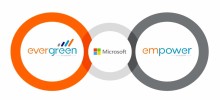Overview
Previously, the standard Accounts Receivable “Automatic Settlement” functionality settled credit notes with the oldest available invoice or according to settlement priority configuration. However, some users required the ability to settle credit notes directly with their corresponding original invoices.
New functionality is introduced to settle credit notes with the original invoices. It is only applicable to project invoices and only for credit note settlement.
This functionality is controlled by a feature, (evergreen) Settle project credit note with original invoice.
Front end configuration:
Parameter: A new parameter named “Settle credit note with original invoice” has been introduced in PMA parameter to control settlement with original invoices.
Navigation: Project management and accounting > Setup > Project management and accounting parameter > Invoice tab
Note: The new PMA parameter is independent from the AR “Automatic Settlement” parameter.
Note: This functionality is not compatible with multi-payer. An enhancement will be introduced in the next release to cover multi-payer scenarios.
Scenarios when standard automatic settlement parameter is on/off
Scenario 1: If standard automatic settlement is turned on – The project credit notes should be settled with the original invoice(s) if the ‘Settle credit note with original invoice’ check box is marked at PMA parameter. If the PMA parameter is not marked then standard functionality will prevail.
Scenario 2: If standard automatic settlement is turned off – The matter credit notes should be settled with the original invoice(s) if the ‘Settle credit note with original invoice’ check box is marked at PMA parameter.
Settlement example:
Two invoices were issued, one on 11/1/2024 and the other on 11/27/2024. Subsequently, a credit note was created for the second invoice dated 11/27/2024.
The evergreen automatic settlement functionality applied the credit note to the original invoice, even though an older outstanding invoice dated 11/1/2024 was still available.
Note: It currently functions only when a reason code is provided while selecting transaction(s) for crediting in the “Select for Credit” dialog box within the Credit Invoicing tab. In a future release, this will be enhanced to work without requiring a reason code.







Post your comment on this topic.